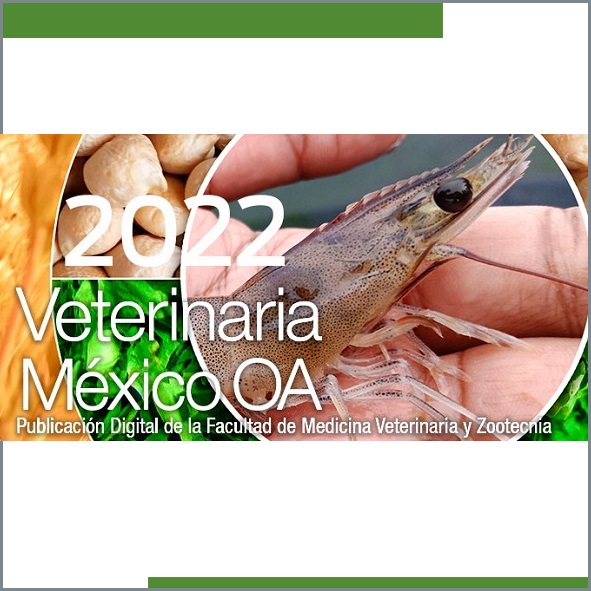STEC non-0157 strains in meat from Southern Sonora, Mexico and its antibiotic resistance
Contenido principal del artículo
Resumen
Escherichia coli is one of the most important bacteria associated with the consumption of meat products causing human disease, with bovines as the main reservoir for this organism. Microbiological quality of raw meat sampled at slaughterhouses was evaluated by measuring the presence of Escherichia coli serogroups that produce the Shiga toxin (referred to as STEC), including both O157:H7 and non-O157 strains can cause Hemolytic Uremic Syndrome (HUS). The purpose of this study was to detect STEC O157 and non-O157 in meat products from Federal Inspection Type (FIT, n=52) and non-FIT (n=88) slaughterhouses, as well as butcheries (n=50), in southern Sonora, Mexico. To achieve this aim, selective media were employed to obtain putative O157:H7 colonies (TS-SMAC agar and Rainbow® agar O157), followed by multiplex PCR for the stx1, stx2, eaeA, and rfB genes, using the O157:H7 serotype as a control. No STEC O157 was found in beef products, but some non-O157 isolates were found containing the stx2 pathogenicity gene (1.40%, 3/224) and/or the fliCH4 flagellar antigen (1.78%, 4/224). This work also confirmed the susceptibility of strains with the stx2 and/or fliCH4 genes to several antibiotics and multi-resistance of all or some of these strains to trimethoprim/sulfamethoxazole, tetracycline, clarithromycin, penicillin G, oxacillin, ampicillin and cefazolin. This study comprises the first report of STEC non-O157 in Sonora and will be useful to establish their association with foodborne outbreaks originating from beef and pork consumption in the future.
Detalles del artículo
License

Veterinaria México OA por Facultad de Medicina Veterinaria y Zootecnia de la Universidad Nacional Autónoma de México se distribuye bajo una Licencia Creative Commons Atribución 4.0 Internacional.
Basada en una obra en http://www.revistas.unam.mx
- Todos los artículos en Veterinaria México OA se publican bajo una licencia de Creative Commons Reconocimiento 4.0 Unported (CC-BY 4.0). Con esta licencia, los autores retienen el derecho de autor, pero permiten a cualquier usuario compartir, copiar, distribuir, transmitir, adaptar y hacer uso comercial de la obra sin necesidad de proporcionar un permiso adicional, siempre y cuando se otorgue el debido reconocimiento al autor o fuente original.
- Al utilizar esta licencia, los artículos en Veterinaria México OA cubren o exceden todos los requisitos fundacionales e institucionales para ser considerados de Acceso Abierto.
- Los autores no pueden utilizar material protegido por derechos de autor en su artículo a menos que ese material esté también disponible bajo una licencia igualmente generosa.



